Trends in Greenhouse Gas Emissions in B.C. (1990-2021)
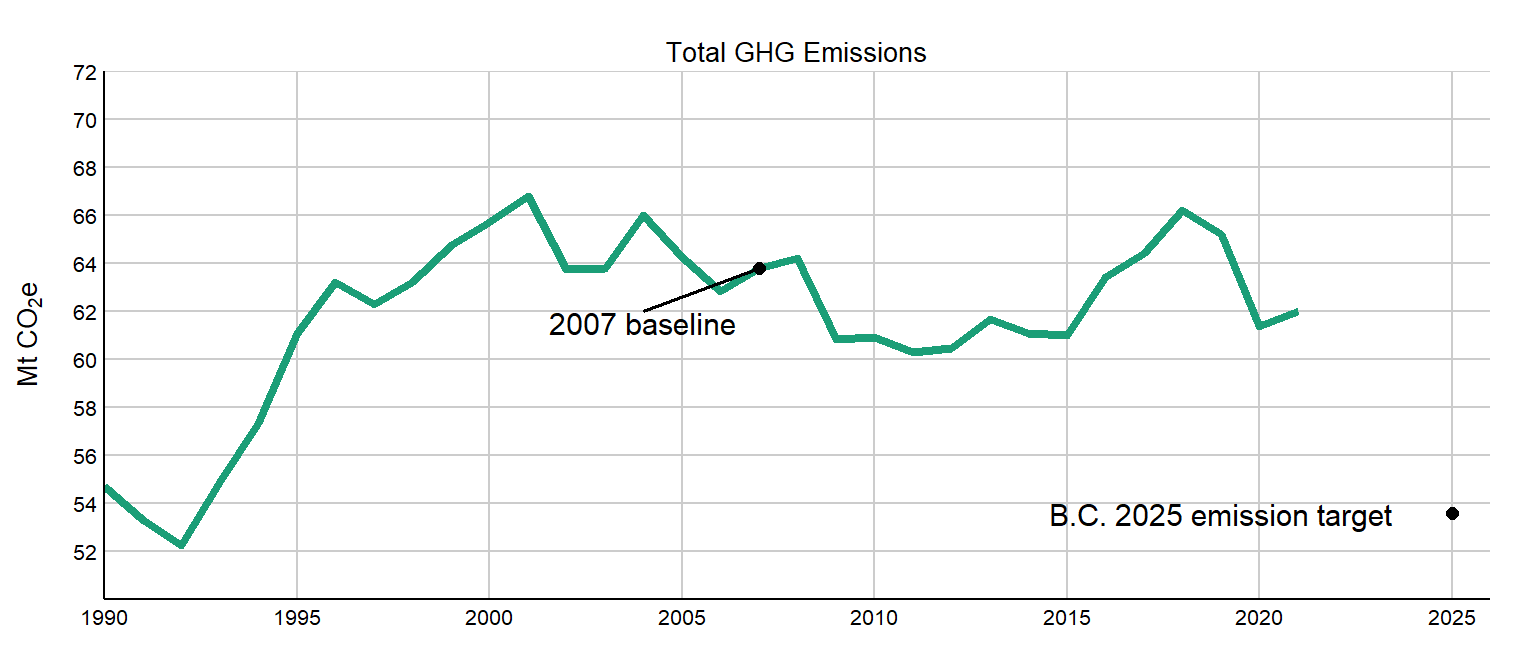 Greenhouse gas emissions plotted over time from 1990 to 2020. The 2007 baseline and the 2025 emission target are highlighted on the graph." width="768" />
Greenhouse gas emissions plotted over time from 1990 to 2020. The 2007 baseline and the 2025 emission target are highlighted on the graph." width="768" />
*To compare to per capita emissions from other jurisdictions, the afforestation and deforestation emissions included in the B.C. inventory were removed for this calculation, as these emission sources are not tracked everywhere. More details on these emissions are available below.
- Greenhouse gas emissions per million dollars of GDP varied year to year between 1990-2001 and have consistently declined since 2001.
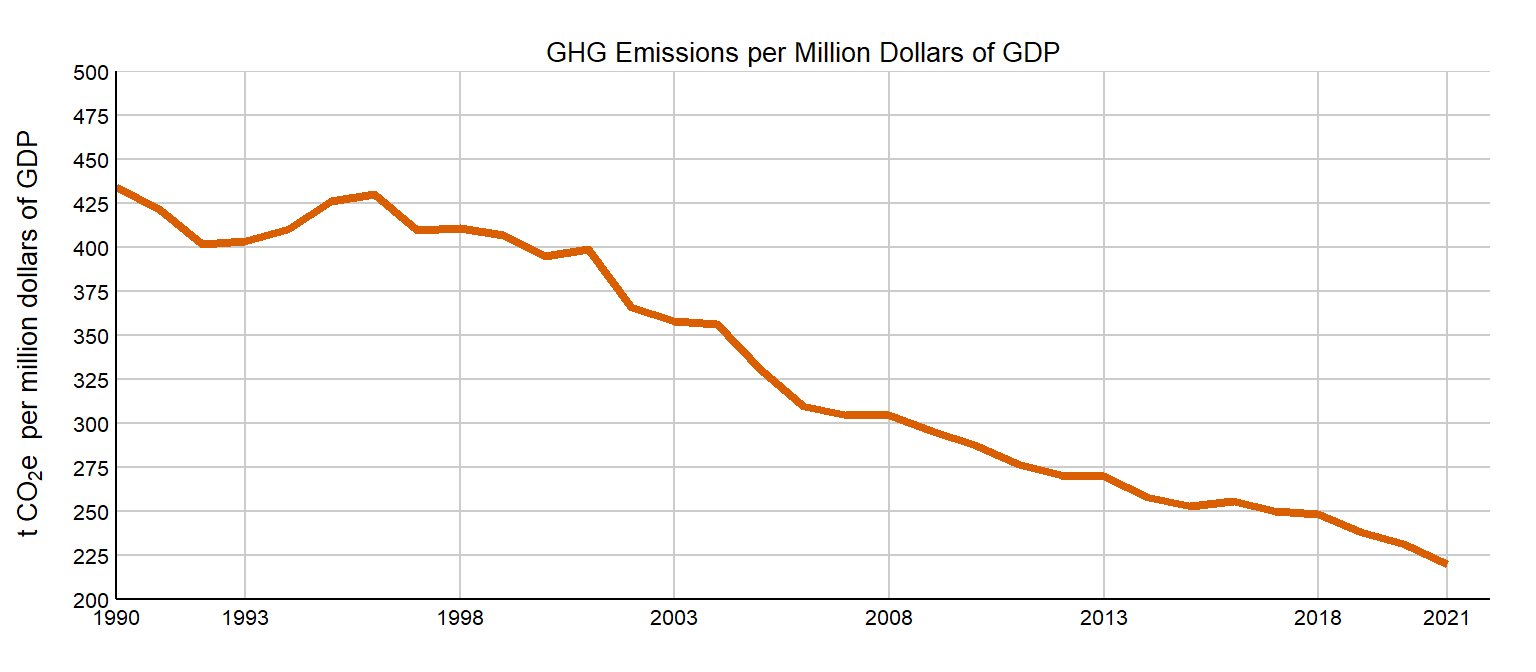 Greenhouse gas emissions per million dollars of GDP plotted over time from 1990 to 2020." width="768" />
Greenhouse gas emissions per million dollars of GDP plotted over time from 1990 to 2020." width="768" />
- Population size and gross domestic product in B.C. have continually increased since 1990 (with the exception of GDP in 2009 and 2020), while greenhouse gas emissions have not shown a clear upward or downward trend; both GDP and emissions showed marked reductions in 2020.
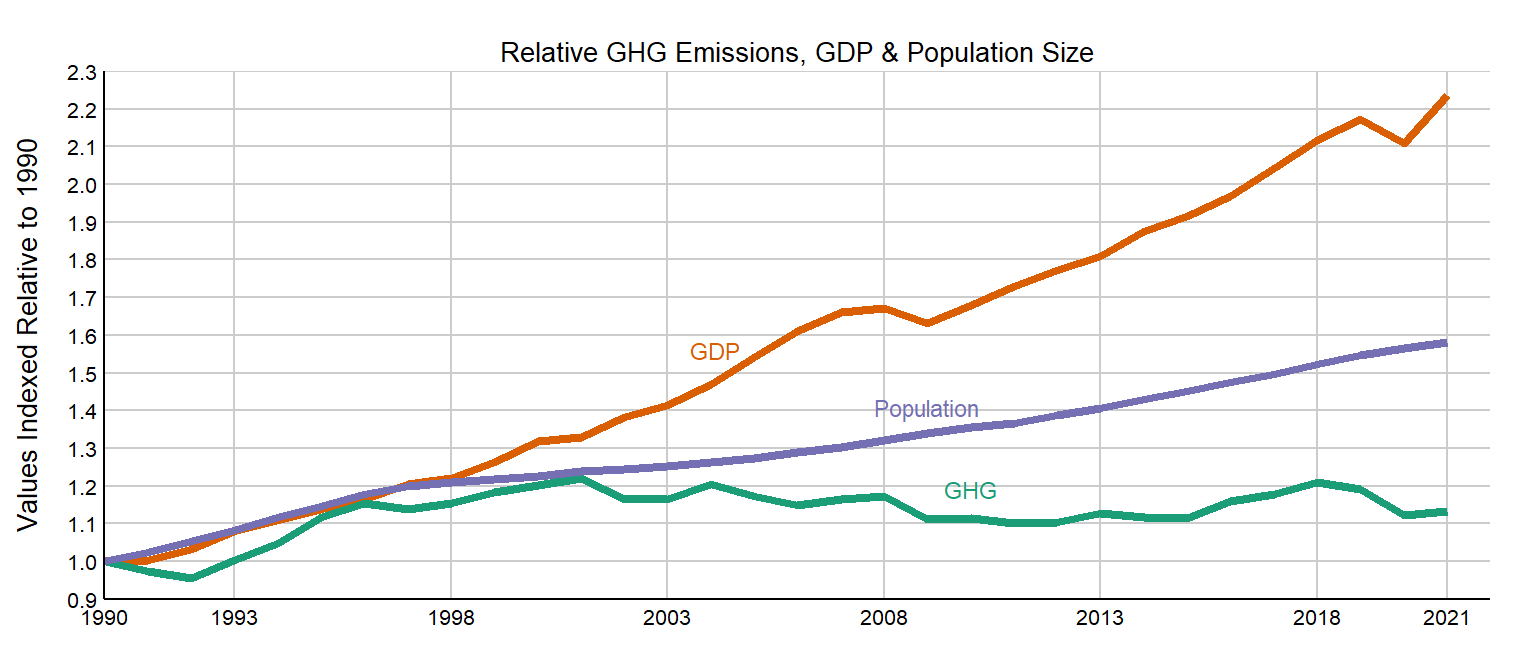
Emissions by Greenhouse Gas
- There are 7 greenhouse gases monitored in B.C. The gases are carbon dioxide (CO2), hydrofluorocarbons (HFCs), methane (CH4), nitrous oxide (N2O), perfluorocarbons (PFCs), sulphur hexafluoride (SF6), and nitrogen trifluoride (NF3).
- Greenhouse gases have different Global warming potential 3 (GWP). The GWP determines how much a gas traps heat in the atmosphere. For example, methane traps 25 times more heat than carbon dioxide, while sulphur hexafluoride traps 22,880 times more heat than carbon dioxide. To combine different gases for an overall emissions total, the emission values of each gas is converted to CO2 equivalent in all of the figures and data in this indicator (British Columbia Greenhouse Gas Provincial Inventory Methodology 4 ).
- The relative contribution of each greenhouse gas emitted in 2021 was CO2 at 84.3%, CH4 at 10.5%, N2O at 2.6%, HFCs at 2.5%, PFCs at 0.1% and SF6 at 0%. There has been no recorded emissions of NF3 in B.C. to date.
- Note: The figure below is interactive. Click on a gas in the legend to add it or remove it from the graph or double-check to isolate one gas. Hover over a year/gas to see annual data. Use the slider at the bottom to look at a specific set of years.
- The amount of carbon dioxide equivalent emitted annually by each greenhouse gas was compared to 1990 levels. CO2 emissions have fluctuated over time. CH4 emissions have also varied since 1990 but have consistently declined since 2013.
- HFC emissions have gradually increased since 1990, peaking in 2020.
- N2O and SF6 emissions have changed very little since 1990. SF6 emissions have been at or near 0 MtCO2e since 2011.
- PFC emissions have varied year to year but have generally declined since 1998 and are below 1990 emissions.
- Note: The figure below is interactive. Click on a gas in the legend to add it or remove it from the graph or double-check to isolate one gas. Hover over a year/gas to see annual data. Use the slider at the bottom to look at a specific set of years.
Greenhouse Gas Emissions by Economic Sector
- Greenhouse gas emissions are sorted into the following economic sectors: transportation, fossil fuels, buildings, heavy industry, waste, deforestation, agriculture, electricity generation, and light industry (includes light manufacturing, construction, and forest resources). Note that the categorizations represented here vary from those used in the Climate Change Accountability Report 2 .
- By looking at the greenhouse gas emissions across the different sectors, we can see where the majority of B.C.’s emissions are coming from, as well as the trends in emissions from those sectors.
- The transportation sector produces the largest amount of greenhouse gas emissions in British Columbia. Passenger transport (trucks, SUVs, small cars and motorcycles) and freight transport (heavy duty trucks and rail) produce the most emissions within the transportation sector.
- The fossil fuel sector produces the second largest amount of greenhouse gas emissions in British Columbia. This sector includes production, refining and distribution activities.
- Note: The figure below is interactive. Click on an sector in the legend to add it or remove it from the graph or double-check to isolate one sector. Hover over a year/industry to see annual data. Use the slider at the bottom to look at a specific set of years.
How have greenhouse gas emissions changed within economic sectors?
- The amount of carbon dioxide equivalent emitted annually by each economic sector was compared to 1990 levels. The transportation sector had the largest increase in annual emissions of any sector over the past three decades. The fossil fuel sector also had consistent increases in annual emissions, with levels peaking from 2011 to 2014.
- Emissions from the transportation sector in 2021 increased 5.5% from 2020 levels but remain 5.1% lower than 2019 levels. The rebound in transportation emissions in 2021 is likely due to fewer COVID-19 travel restrictions.
- Heavy industry's emissions from 2000 to 2013 and have fluctuated over the past decade. Deforestation emissions declined from 1990 to 2005, after which they have remained consistent.
- Emissions from the buildings, agriculture, light industry, electricity, and waste sectors have fluctuated over the past three decades, but at a lower magnitude ( British Columbia Greenhouse Gas Provincial Inventory Methodology 4 .
- Each subsector contributes varying amounts of emissions to the sector total. Examining these breakdowns further can give us a greater insight into the sources of emissions in B.C.
- In each economic sector figure below, the grey background shows the total emissions from each sector over time and the color sections show the contribution of each subsector compared to the sector total.
- Note: The figure below is interactive. Click on an economic sector tab at the top of the figure to view detailed information about subsectors.
Transportation
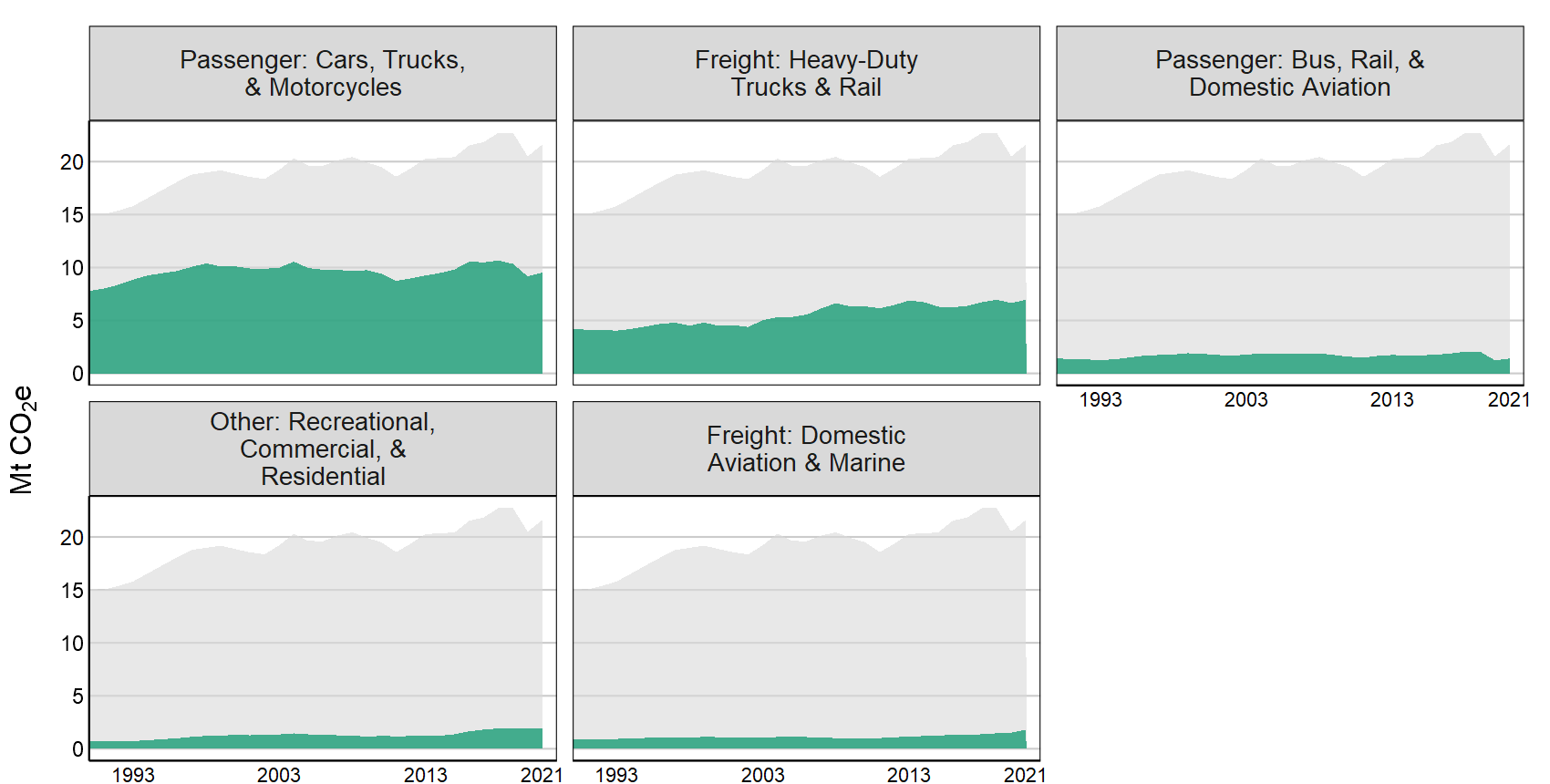
Fossil Fuel Industry
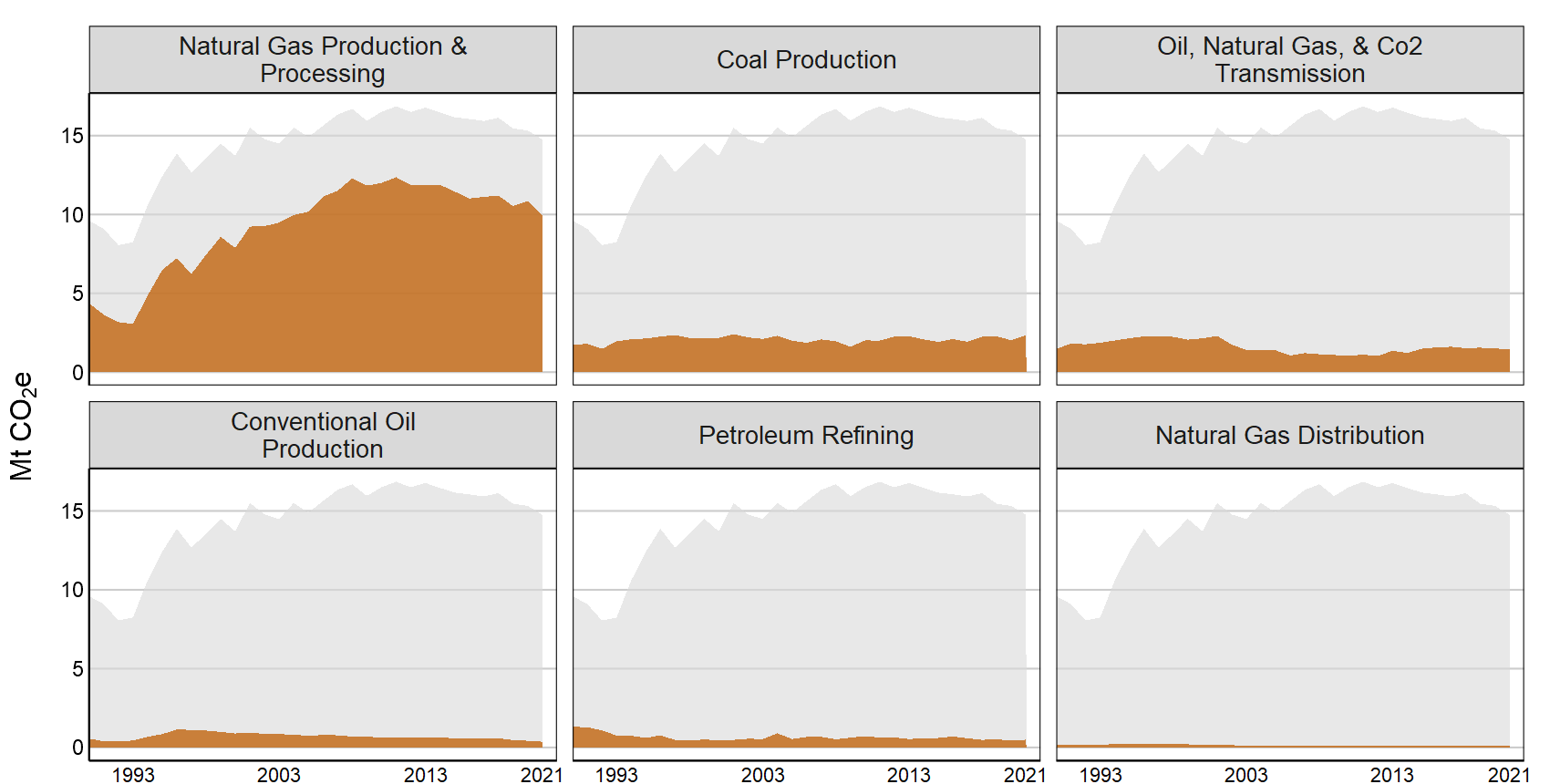
Buildings
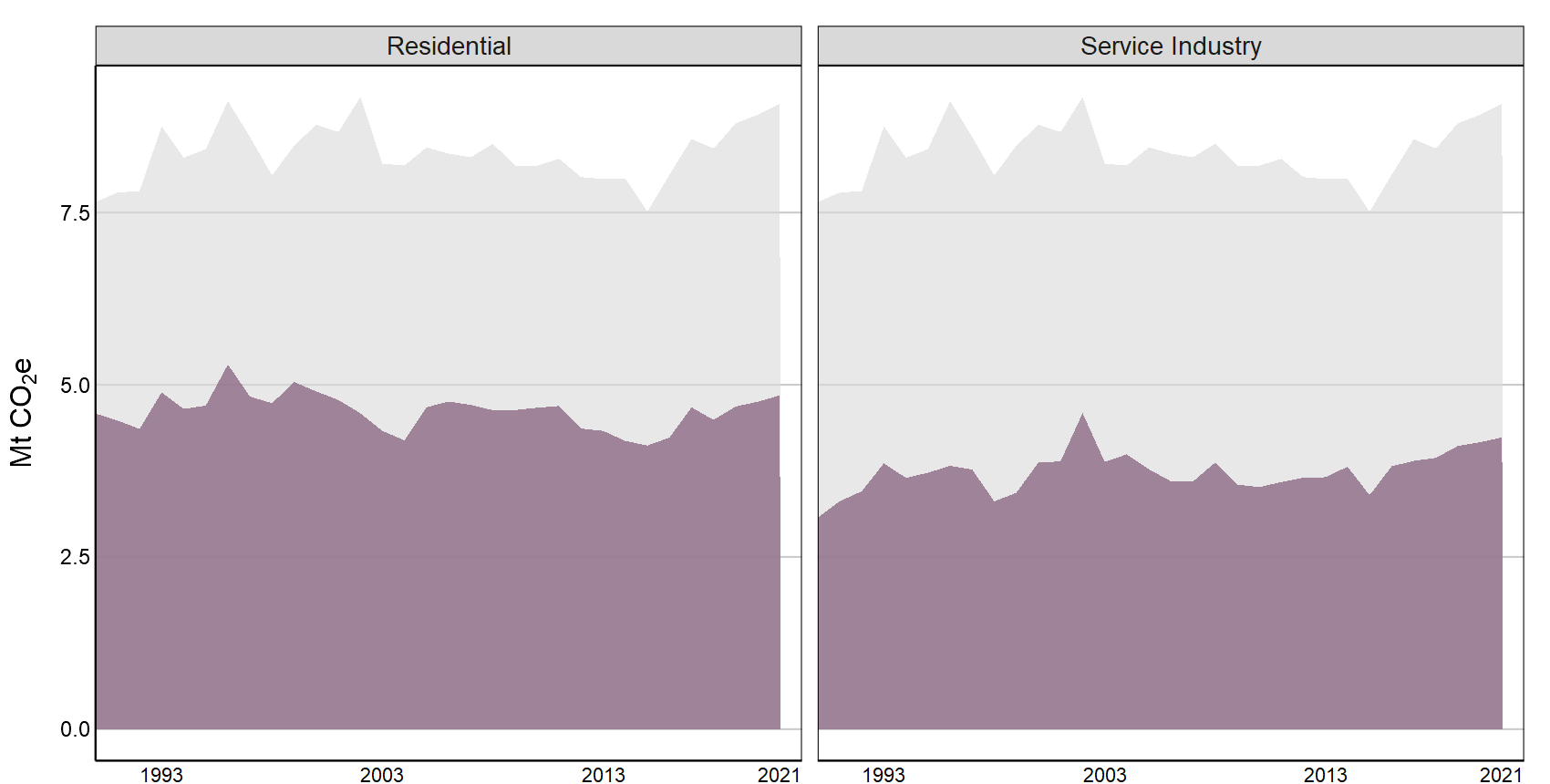
Heavy Industry
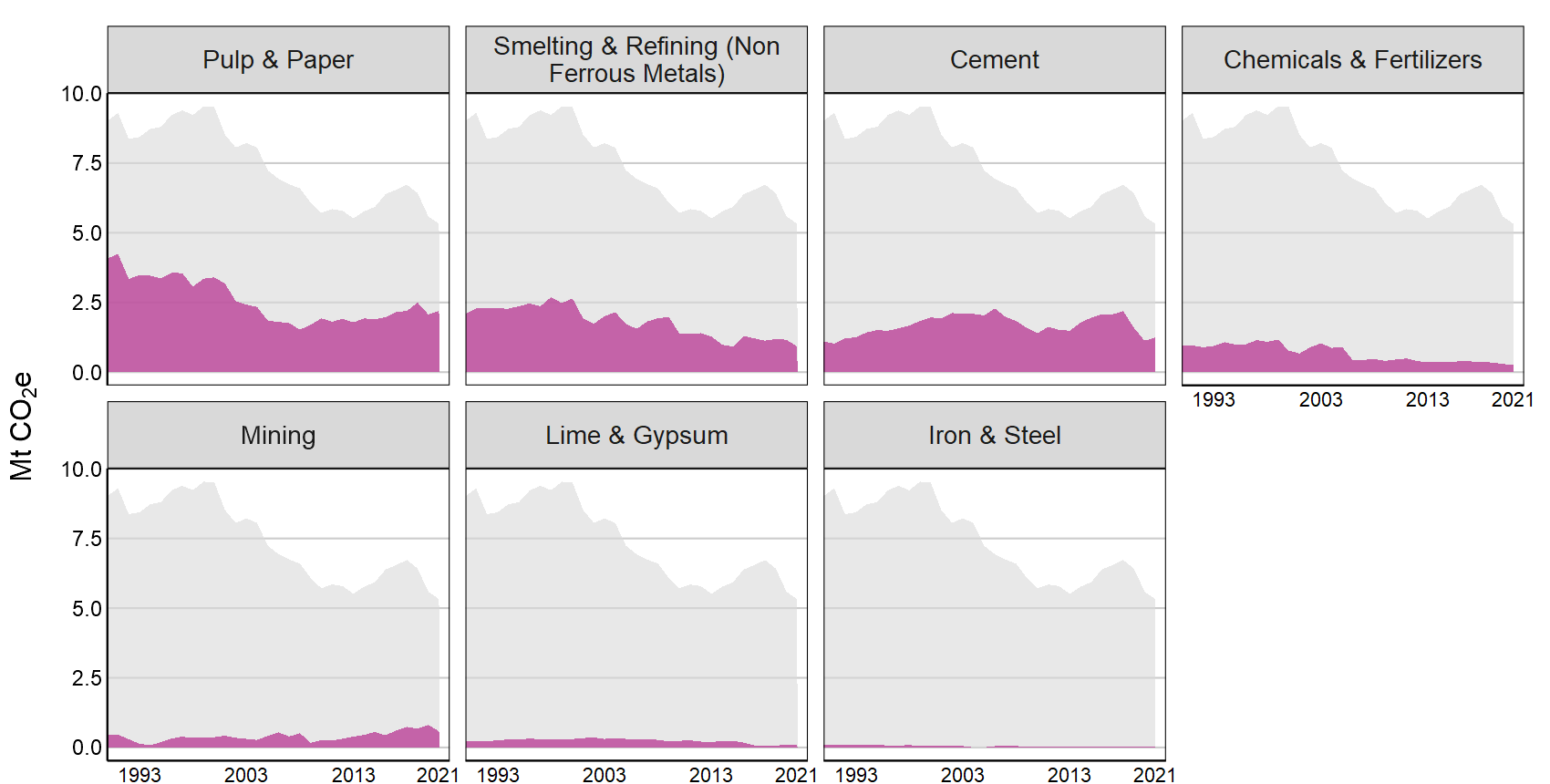
Waste
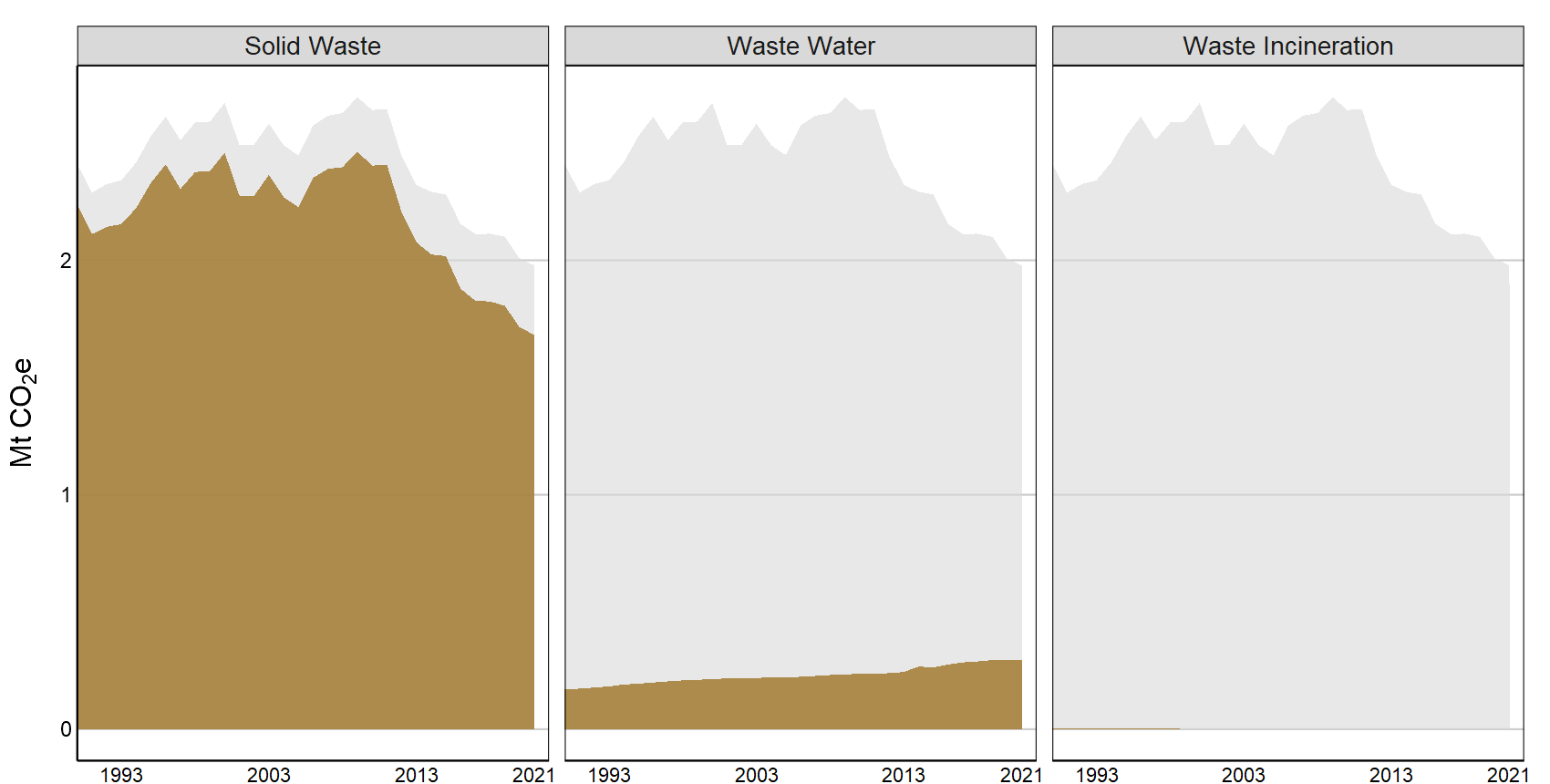
Agriculture
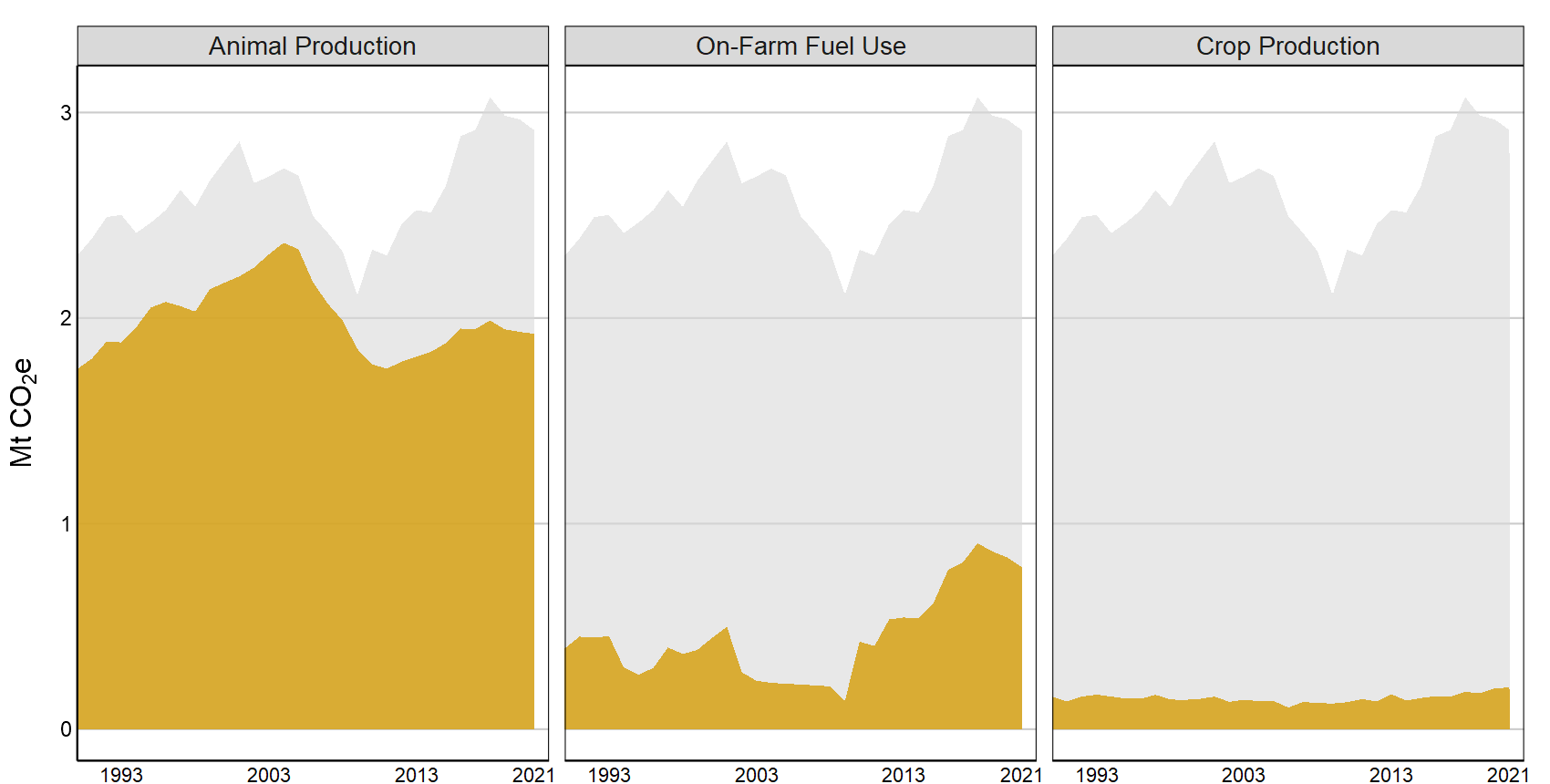
Light Industry
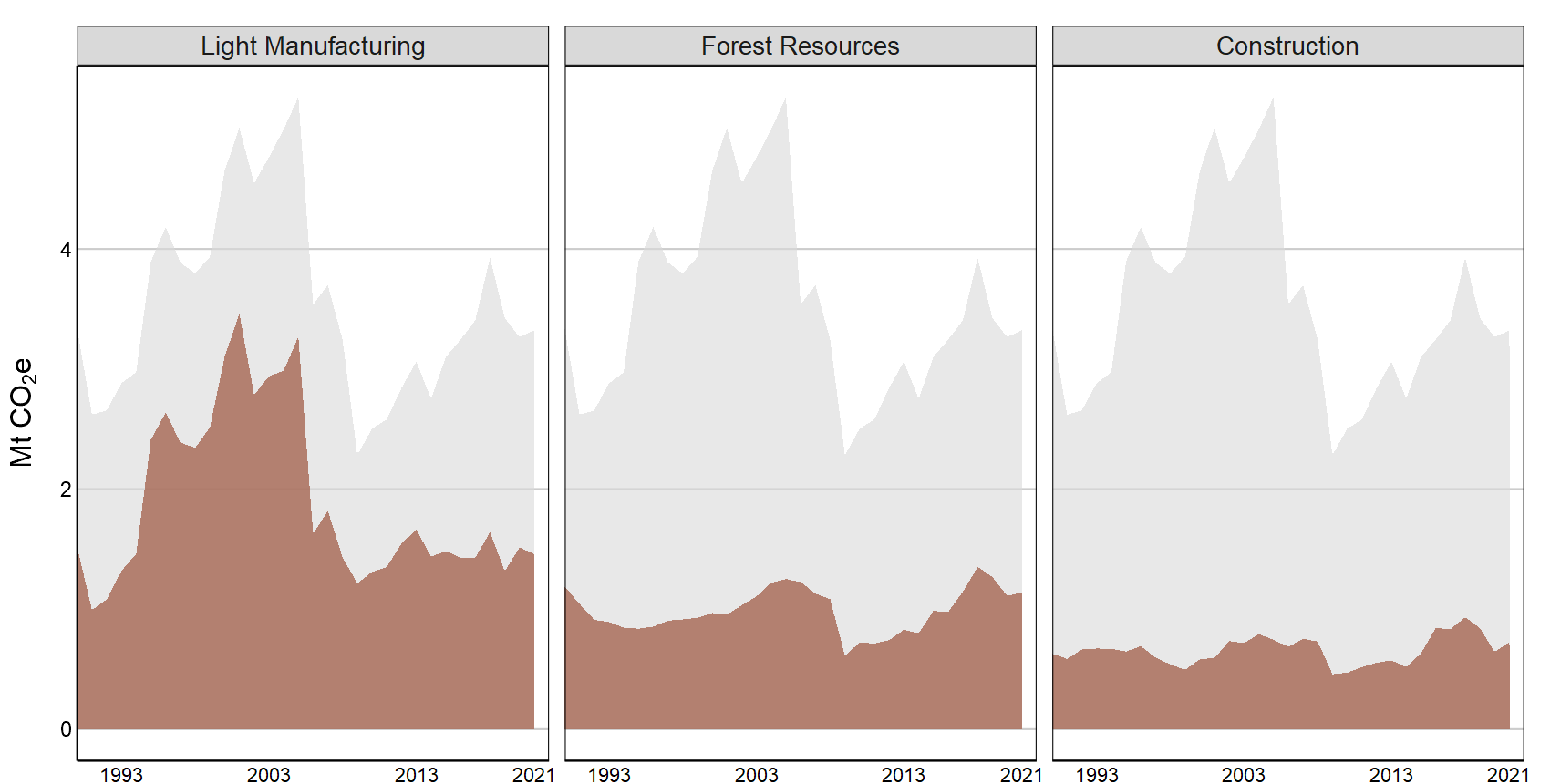
Deforestation
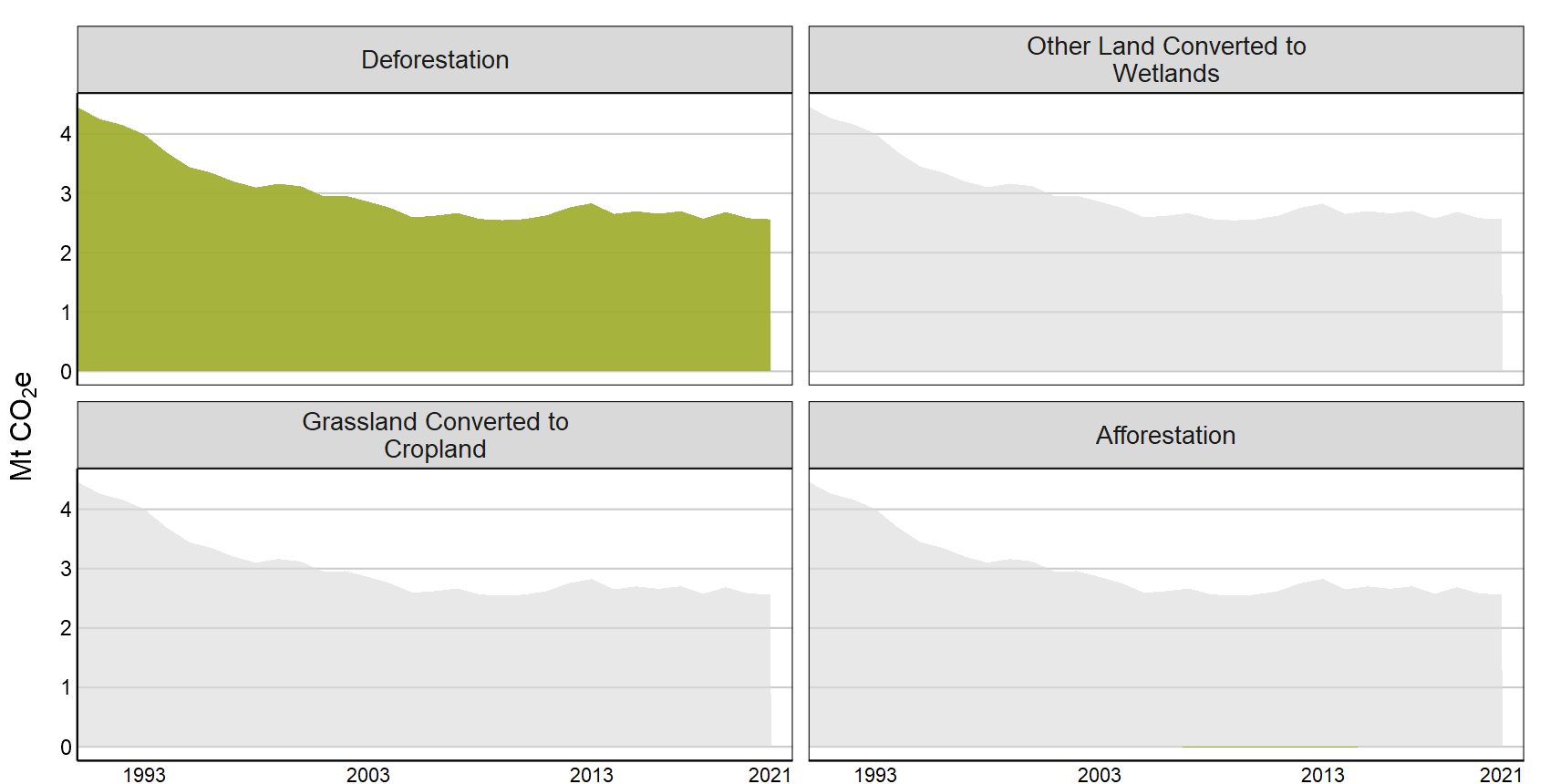
Methods
The British Columbia Greenhouse Gas Provincial Inventory Methodology 4 provides a description of the methodologies and data sources used in preparing B.C.’s greenhouse gas emissions inventory. Currently, most of the Provincial Inventory data and methods come from Canada’s National Inventory Report (NIR) 5 . Any deviations from the NIR methodology or categorization are described in detail in the B.C. Provincial Inventory Methodology 4 . Additional information is also available in the British Columbia Greenhouse Gas Emission Inventory (2021) 1 .
British Columbia population estimates ( Table: 17-10-0005-01) and gross domestic product ( Table: 36-10-0222-01) data were sourced from Statistics Canada. Gross domestic product (GDP) is calculated using expenditure-based GDP and reported in millions of chained 2012 dollars.
References and Other Useful Links
Data
*By accessing these datasets, you agree to the licence associated with each file, as indicated below.
Updated December 2023
Environmental Reporting BC. 2023. Trends in Greenhouse Gas Emissions in B.C. (1990-2021). State of Environment Reporting, Ministry of Environment and Climate Change Strategy, British Columbia, Canada.

 Greenhouse gas emissions plotted over time from 1990 to 2020. The 2007 baseline and the 2025 emission target are highlighted on the graph." width="768" />
Greenhouse gas emissions plotted over time from 1990 to 2020. The 2007 baseline and the 2025 emission target are highlighted on the graph." width="768" /> Greenhouse gas emissions plotted over time from 1990 to 2020. The 2007 baseline and the 2025 emission target are highlighted on the graph." width="768" />
Greenhouse gas emissions plotted over time from 1990 to 2020. The 2007 baseline and the 2025 emission target are highlighted on the graph." width="768" /> Greenhouse gas emissions per million dollars of GDP plotted over time from 1990 to 2020." width="768" />
Greenhouse gas emissions per million dollars of GDP plotted over time from 1990 to 2020." width="768" />







